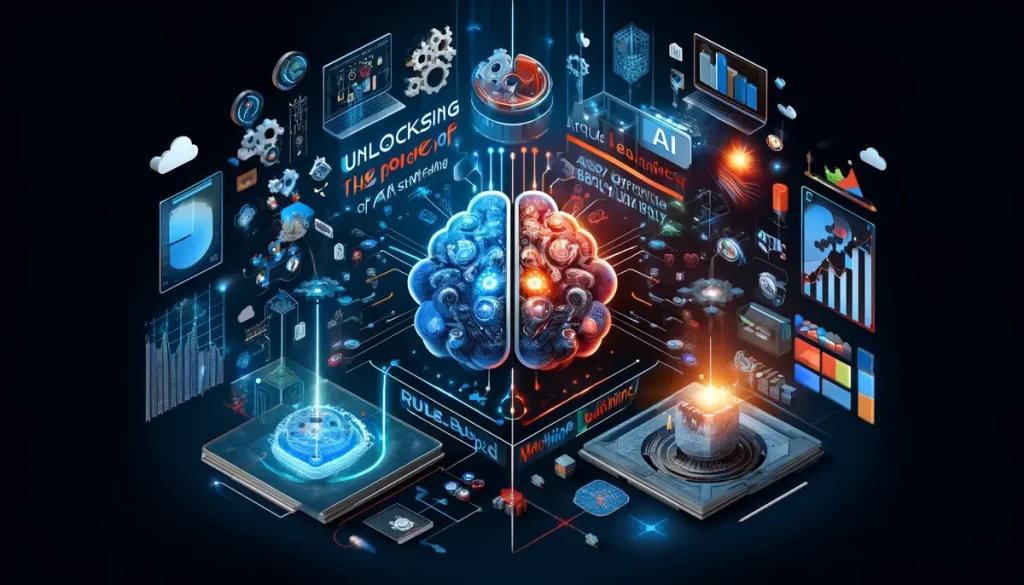Understanding Rule-Based Systems
Rule-based systems, a fundamental component of artificial intelligence (AI), operate on a set of predefined rules to make decisions and solve problems. These rules are established by developers based on expert human knowledge. When input data is processed, the system follows these rules to generate outputs. This method encapsulates human expertise into explicit programming, enabling the system to execute tasks predictably and efficiently.
In a rule-based system, developers first define a list of rules and facts. An inference engine then evaluates incoming data against these rules, executing actions based on predefined conditions. For instance, in a banking scenario, a rule-based algorithm may assess a customer’s financial information against set criteria to approve a loan application. This deterministic approach ensures accuracy and consistency in decision-making.
Advantages of Rule-Based Systems
- Accuracy: By operating within predefined rules, rule-based systems ensure precision and consistency in decision-making.
- Ease of Use: These systems require minimal data and straightforward rules, making them easy to develop, implement, and debug.
- Speed: With predefined rules, decision-making is swift and efficient, leading to quick responses to input data.
Limitations of Rule-Based Systems
- Limited Scope: Rule-based systems lack adaptability and can only operate within the confines of their programmed rules.
- Immutability: Modifying existing rules or incorporating new ones can be cumbersome and costly, hindering scalability.
- Restricted Intelligence: These systems rely solely on explicit programming and cannot make decisions beyond their predefined rules, limiting their flexibility.
Choosing Between Rule-Based and Machine Learning Systems
Factors Influencing the Decision
1. Task Complexity:
- Rule-Based Systems: Excel in scenarios with straightforward decision-making processes and clear criteria. Tasks that can be defined by a set of rules, such as automated approval processes or routing decisions, are well-suited for rule-based systems.
- Machine Learning Systems: Better suited for complex tasks that involve analyzing vast amounts of data and identifying intricate patterns. Tasks like fraud detection, medical diagnosis, and natural language processing benefit from the adaptability and learning capabilities of machine learning algorithms.
2. Data Availability:
- Rule-Based Systems: Require minimal training data as they rely on predefined rules for decision-making. Suitable for applications where data availability is limited or where the decision criteria are well-defined.
- Machine Learning Systems: Thrive on ample data availability, as they learn from large datasets to identify patterns and relationships. Applications with abundant data sources, such as e-commerce transactions, sensor data, and social media interactions, provide rich inputs for machine learning models.
3. Organizational Needs:
- Rule-Based Systems: Offer simplicity and precision, making them attractive for organizations seeking deterministic decision-making processes. Industries such as banking, insurance, and customer service benefit from the reliability and consistency of rule-based systems.
- Machine Learning Systems: Provide adaptability and continuous learning capabilities, catering to organizations operating in dynamic environments. Sectors like healthcare, finance, and marketing leverage machine learning for predictive analytics, personalized recommendations, and risk assessment.
Trade-offs Between Simplicity and Flexibility
1. Rule-Based Systems:
- Advantages: Offer simplicity, precision, and ease of implementation. Well-suited for tasks requiring deterministic decision-making and where interpretability is crucial.
- Limitations: Lack adaptability and struggle with complex tasks or evolving environments. Modifying rules or incorporating new conditions can be cumbersome and costly.
2. Machine Learning Systems:
- Advantages: Provide adaptability, scalability, and the ability to handle complex tasks. Learn from data and continuously improve performance over time.
- Limitations: Require ample training data and technical expertise for model development and maintenance. May be challenging to interpret and explain decisions due to their black-box nature.
Conclusion
In AI, rule-based systems offer a straightforward yet effective approach to decision-making. By encapsulating human expertise into explicit rules, these systems enable precise and consistent outcomes. While they may have limitations in adaptability, rule-based systems remain a valuable tool for tasks requiring deterministic decision-making. As organizations navigate the complexities of AI adoption, understanding the strengths and limitations of rule-based systems is crucial for informed decision-making and successful implementation.

